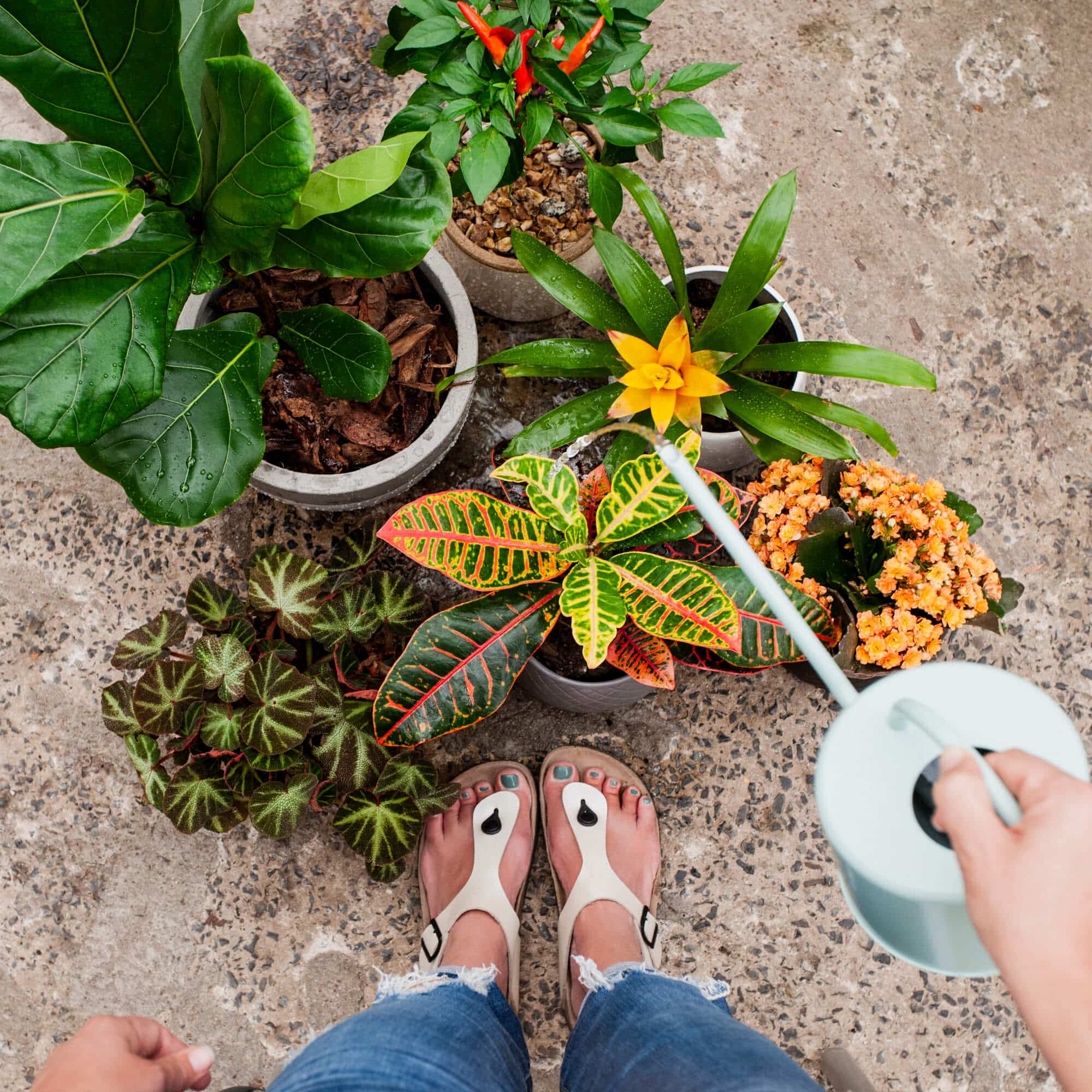Indoor havens
Indoor plant tips

As gardens become smaller, plant lovers find other ways to keep their green thumbs in action. How? By creating potted gardens inside their homes.
The best thing about creating an indoor garden is that no matter what your interior décor style is, you’ll find a plant and a container that complements it.
Interior designers are making use of dramatic indoor plants such as fiddle leaf figs and rubber trees to enhance their style, but you don’t need a degree in design to understand that the structural form of plants and leafy green beauty are the perfect foil for living décor that’s easy to do yourself.
Here’s how to grow indoor plants properly
- Choose the right place
Different indoor plants have different light requirements. Some plants (eg kalanchoe and chrysanthemums) like bright light with a few hours of sunshine, while others (cymbidium orchids, cyclamen, azalea, painted-leaf begonia and crotons) need bright light but no direct sunshine. Research the plants you’re interested in before buying, and determine where they will be happiest.
- Choose the right soil
Potting soil provides the initial nutrients a plant requires and it permits moisture retention while allowing any excess water to drain away. So always choose a pre-prepared potting mix that is specifically formulated for house plants and is high in organic matter. Adding water-retaining granules and a mulch will help the soil retain water.
- Choose the right pot medium
A too-small pot gives a plant a top-heavy look and cramped growing quarters, whereas a too-large container overpowers a plant, making it appear undernourished and unloved. Whether you plant directly into your chosen container or use it as a decorative sleeve, choose a decorative container no more than 5cm wider than the nursery pot.
Browse some of our best-selling pots online here.
- Know how much water they need
No plants will thrive with soggy roots, so they must drain well. Place a few pebbles under the container to provide drainage. If the drainage saucer under the container fills with water, stop watering for a few days.
5- Don’t forget to fertalise
Fertilising at least once a month is essential during the growing season. Use regular (preferably organic) garden granular or liquid fertiliser, or the powders, sticks or pellets made for indoor plants.
Indoor plants for every room
Bathrooms
Medium to low light with high humidity,
- Hen-and-chickens
- Ferns
- Urn plant (aechmea fasciata),
- Aglaonema
- Dumb cane (dieffenbachia spp.)
- Peace lily
- Philodendron
- Christmas cactuses (schlumbergera cultivars)
Home office
Plant foliage keeps the room fresh by absorbing carbon dioxide from the air
- Anthuriums
- Columnea
- Gerbera
- Amaryllis
- Kalanchoe
- Red-foliaged Begonia rex
- Caladium bicolor
Kitchen
- Chrysanthemums
- Barberton daisies
- Nertera
- Begonia tuber hybrids
- Polyanthus primula
- Edible herbs




